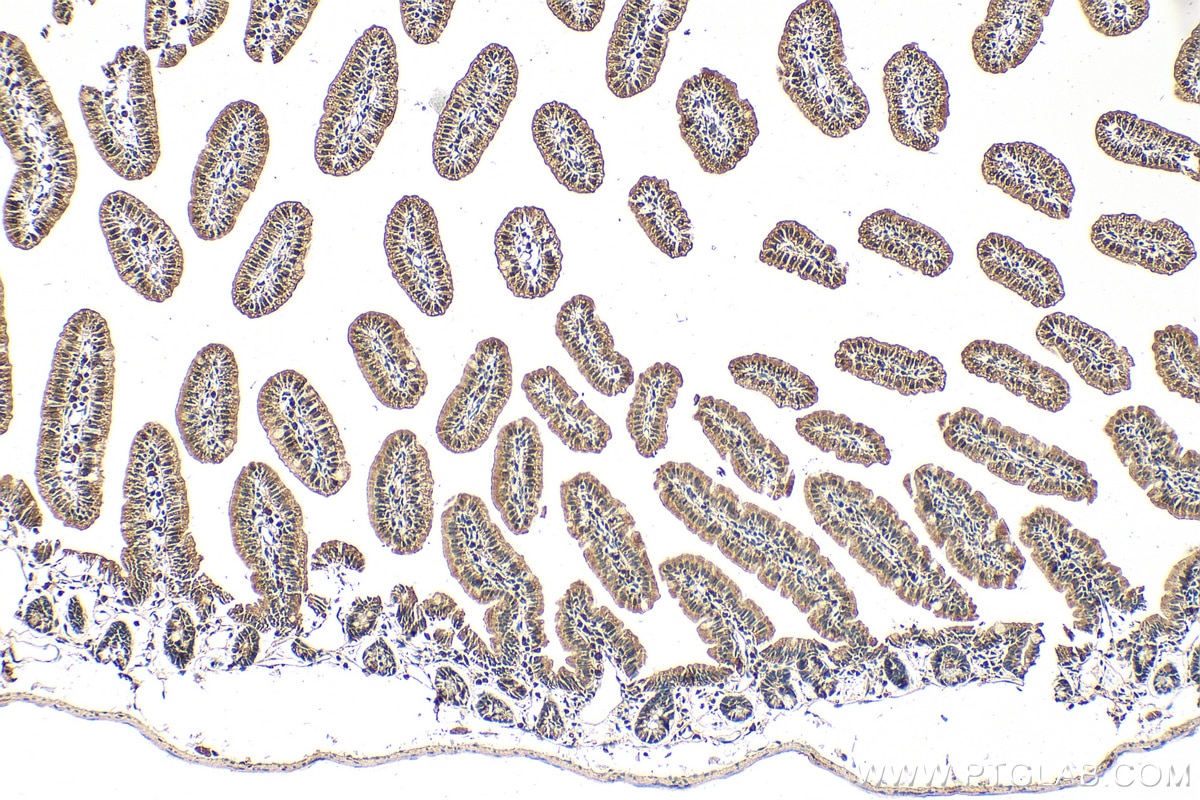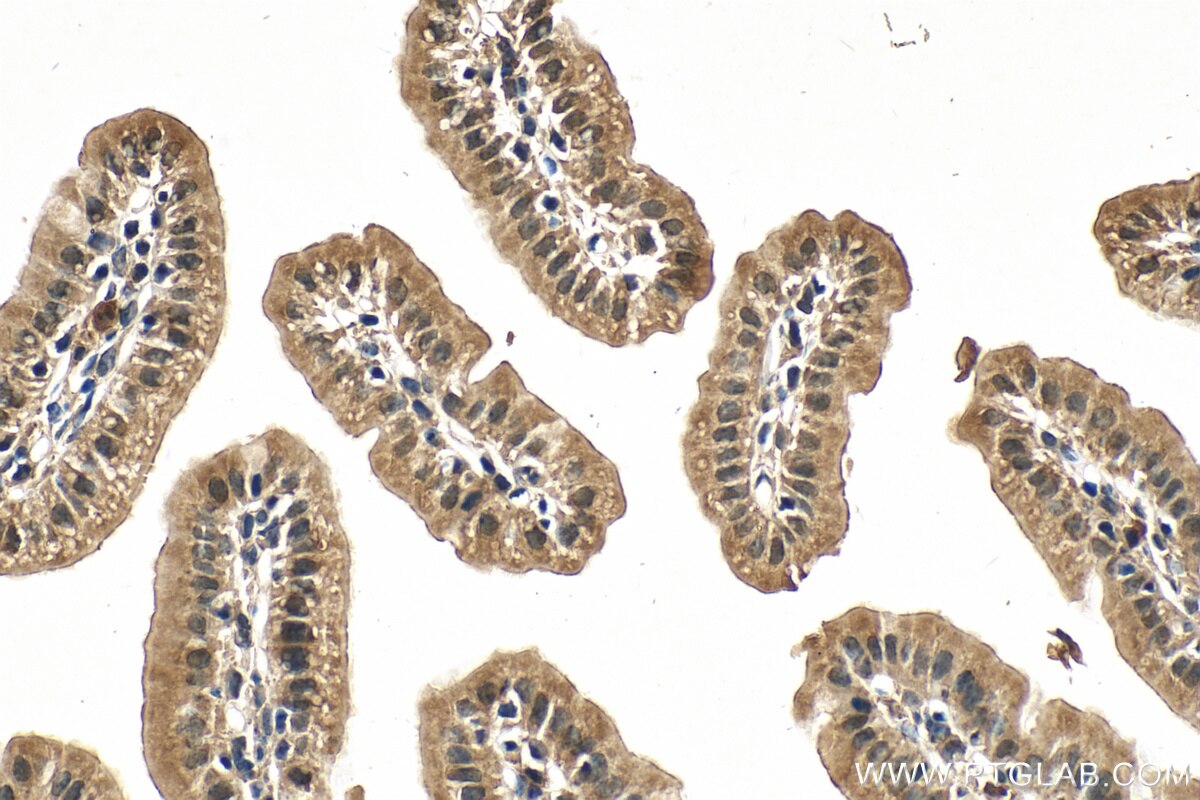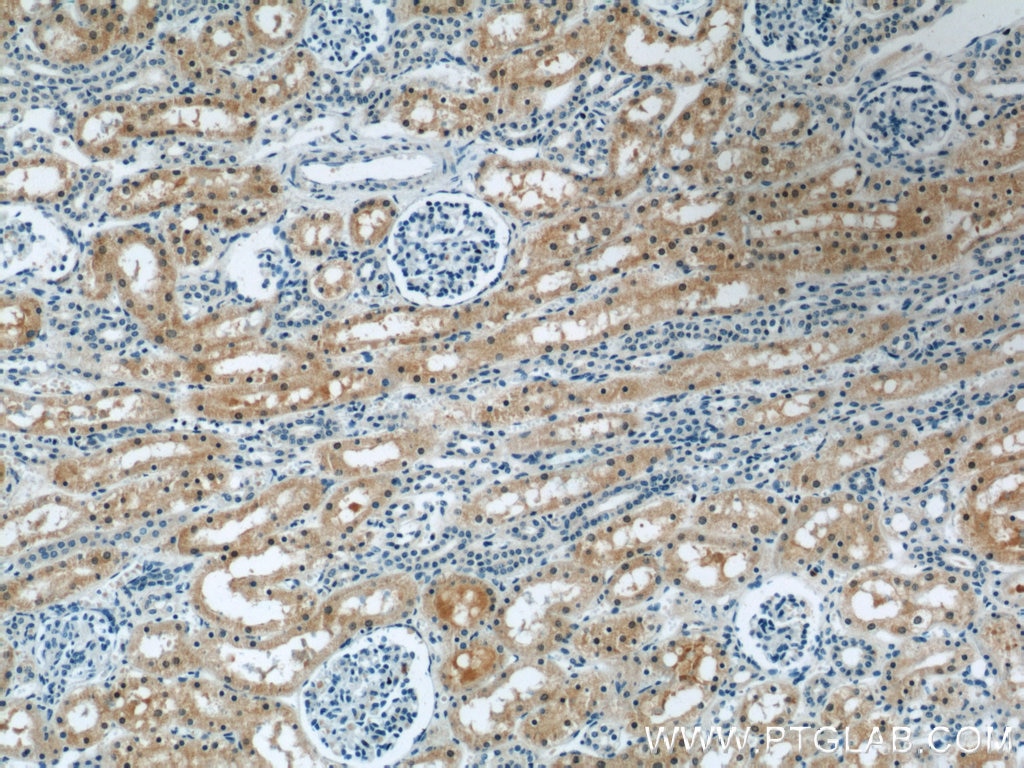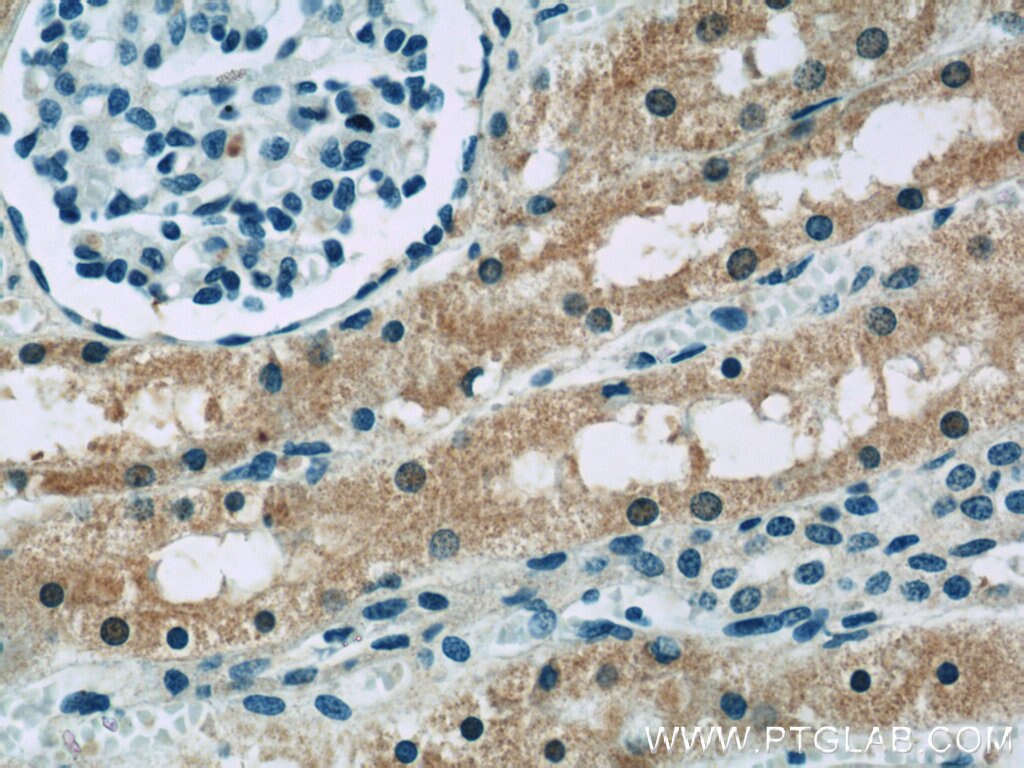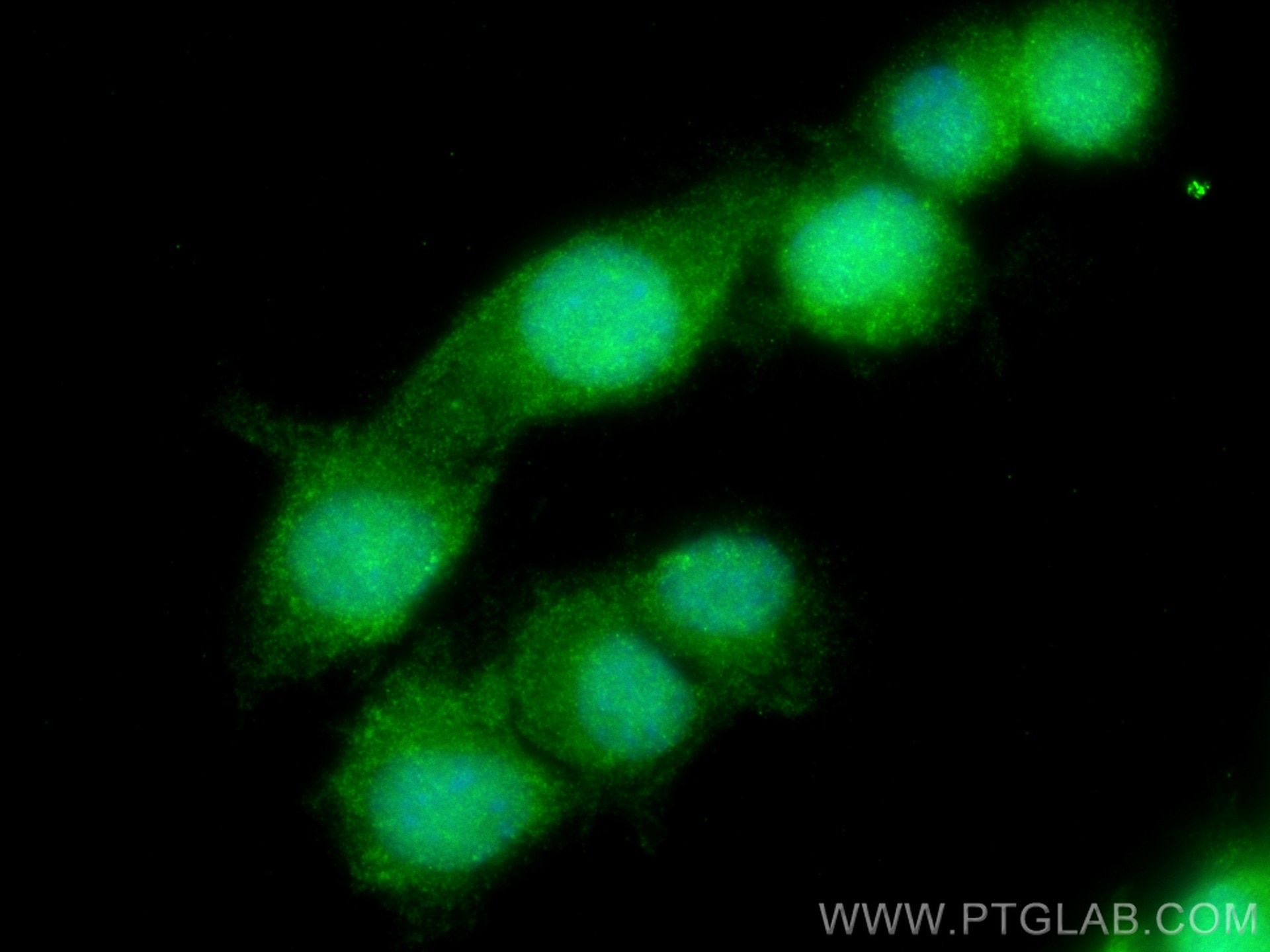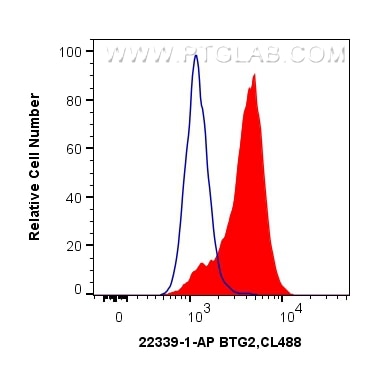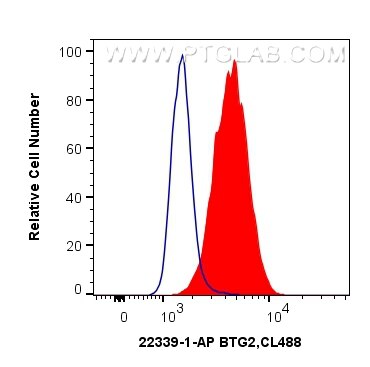- Phare
- Validé par KD/KO
Anticorps Polyclonal de lapin anti-BTG2
BTG2 Polyclonal Antibody for IHC, IF/ICC, FC (Intra), ELISA
Hôte / Isotype
Lapin / IgG
Réactivité testée
Humain, souris
Applications
WB, IHC, IF/ICC, FC (Intra), ELISA
Conjugaison
Non conjugué
N° de cat : 22339-1-AP
Synonymes
Galerie de données de validation
Applications testées
| Résultats positifs en IHC | tissu d'intestin grêle de souris, tissu rénal humain il est suggéré de démasquer l'antigène avec un tampon de TE buffer pH 9.0; (*) À défaut, 'le démasquage de l'antigène peut être 'effectué avec un tampon citrate pH 6,0. |
| Résultats positifs en IF/ICC | cellules Neuro-2a, |
| Résultats positifs en FC (Intra) | cellules SH-SY5Y, cellules Neuro-2a |
Dilution recommandée
| Application | Dilution |
|---|---|
| Immunohistochimie (IHC) | IHC : 1:50-1:500 |
| Immunofluorescence (IF)/ICC | IF/ICC : 1:200-1:800 |
| Flow Cytometry (FC) (INTRA) | FC (INTRA) : 0.40 ug per 10^6 cells in a 100 µl suspension |
| It is recommended that this reagent should be titrated in each testing system to obtain optimal results. | |
| Sample-dependent, check data in validation data gallery | |
Applications publiées
| KD/KO | See 3 publications below |
| WB | See 8 publications below |
| IHC | See 5 publications below |
| IF | See 1 publications below |
Informations sur le produit
22339-1-AP cible BTG2 dans les applications de WB, IHC, IF/ICC, FC (Intra), ELISA et montre une réactivité avec des échantillons Humain, souris
| Réactivité | Humain, souris |
| Réactivité citée | Humain, souris |
| Hôte / Isotype | Lapin / IgG |
| Clonalité | Polyclonal |
| Type | Anticorps |
| Immunogène | BTG2 Protéine recombinante Ag17819 |
| Nom complet | BTG family, member 2 |
| Masse moléculaire calculée | 158 aa, 17 kDa |
| Numéro d’acquisition GenBank | BC105949 |
| Symbole du gène | BTG2 |
| Identification du gène (NCBI) | 7832 |
| Conjugaison | Non conjugué |
| Forme | Liquide |
| Méthode de purification | Purification par affinité contre l'antigène |
| Tampon de stockage | PBS with 0.02% sodium azide and 50% glycerol |
| Conditions de stockage | Stocker à -20°C. Stable pendant un an après l'expédition. L'aliquotage n'est pas nécessaire pour le stockage à -20oC Les 20ul contiennent 0,1% de BSA. |
Informations générales
Protein BTG2, the anti-proliferative human homolog of murine Pc3/Tis21, belongs to the BTG/Tob family. This family has structurally related proteins that appear to have anti-proliferative properties. It has been demonstrated that BTG2 is p53-inducible and is involved in cell cycle control and cellular response to DNA damage (PMID: 8944033). As a transcriptional co-regulator, BTG2 has been shown to interact with CAF1 and POP2, and works as a co-activator of ERa-mediated transcription via a CCR4-like complex (PMID: 18974182).
Protocole
| Product Specific Protocols | |
|---|---|
| IHC protocol for BTG2 antibody 22339-1-AP | Download protocol |
| IF protocol for BTG2 antibody 22339-1-AP | Download protocol |
| Standard Protocols | |
|---|---|
| Click here to view our Standard Protocols |
Publications
| Species | Application | Title |
|---|---|---|
Front Oncol Transcriptomic Analyses Reveal B-Cell Translocation Gene 2 as a Potential Therapeutic Target in Ovarian Cancer.
| ||
FASEB J MicroRNA-409-3p/BTG2 signaling axis improves impaired angiogenesis and wound healing in obese mice | ||
ACS Chem Biol Epitranscriptomic N6-Methyladenosine Modification Is Required for Direct Lineage Reprogramming into Neurons. | ||
Front Mol Biosci Development and Validation of a 7-Gene Inflammatory Signature Forecasts Prognosis and Diverse Immune Landscape in Lung Adenocarcinoma. | ||
J Oncol lncRNA SNHG5 Modulates Endometrial Cancer Progression via the miR-25-3p/BTG2 Axis. | ||
Dig Dis Sci BTG2 Is Down-Regulated and Inhibits Cancer Stem Cell-Like Features of Side Population Cells in Hepatocellular Carcinoma. |
Avis
The reviews below have been submitted by verified Proteintech customers who received an incentive for providing their feedback.
FH Tianyi (Verified Customer) (01-12-2024) | Antigen retrieval in TE buffer, incubated with AF488 at room temperature for 2 h.
|
